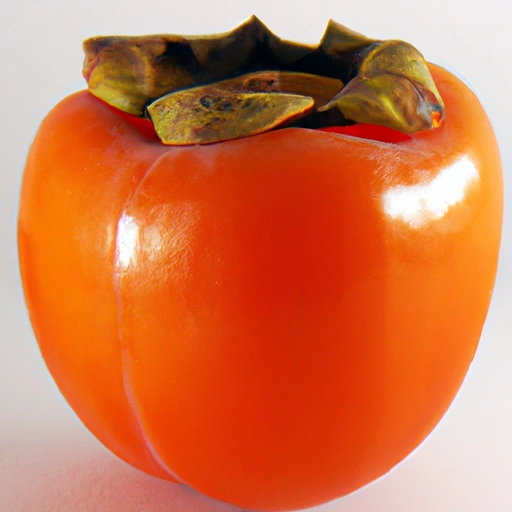Persimmon
Description

Persimmon is a sweet, flavorful fruit that originates from Asia and is widely used in a variety of dishes. It has a smooth, shiny exterior skin and a soft, succulent interior. The fruit comes in several varieties, including the Hachiya and Fuyu, with textures ranging from firm to custard-like when ripe. Persimmons are enjoyed for their versatility in both sweet and savory recipes and can be consumed raw, dried, or cooked.
Common uses
Persimmons are commonly used in a variety of dishes, such as salads, desserts, smoothies, and jams. They can also be sliced and added to cereals or yogurt for a natural sweetener. In some cultures, dried persimmons are a popular snack, offering a chewy texture and concentrated flavor.
Nutritional value
Calories
A medium-sized persimmon (about 168 grams or 6 ounces) contains approximately 118 calories (494 kJ).
Protein
Persimmons provide about 1 gram of protein per medium-sized fruit.
Fat
This fruit is low in fat, with less than 0.3 grams per medium-sized fruit.
Carbohydrates
A medium-sized persimmon has about 31 grams of carbohydrates, which includes a significant amount of natural sugars and dietary fiber.
Vitamins
Persimmons are an excellent source of vitamin A and vitamin C, and also contain some B vitamins such as folate.
Minerals
They contain minerals like potassium, magnesium, and manganese, which are essential for maintaining good health.
Health benefits
Persimmons are rich in antioxidants, which help protect the body from oxidative stress and may reduce the risk of chronic diseases. The high fiber content aids in digestion and can contribute to heart health. Additionally, the vitamins and minerals found in persimmons support immune function and eye health.
Potential risks
While persimmons are generally safe for consumption, the tannins present in unripe Hachiya persimmons can lead to digestive issues if consumed in excess. People with certain health conditions should also be mindful of the fruit's sugar content.
Common recipes
Persimmons are used in a variety of recipes ranging from traditional Asian sweets and pastries to contemporary salads and smoothies. Persimmon pudding and persimmon bread are classic American desserts that highlight the fruit's versatility.
Cooking methods
The fruit can be baked, boiled, or even grilled to enhance its natural flavors. Fuyu persimmons are often eaten raw, while Hachiya persimmons are typically used in cooked applications due to their astringency when unripe.
Pairing with other ingredients
Persimmons pair well with flavors like cinnamon, nutmeg, and ginger. They also complement cheeses, such as brie and goat cheese, and work well with nuts like walnuts and pecans.
Summary
Persimmon is a nutritious and versatile fruit that can be incorporated into a wide array of dishes. With its rich flavor and numerous health benefits, it is a valuable addition to both sweet and savory recipes. Whether consumed fresh, dried, or cooked, persimmons offer a unique taste experience that is enjoyed by people around the world.